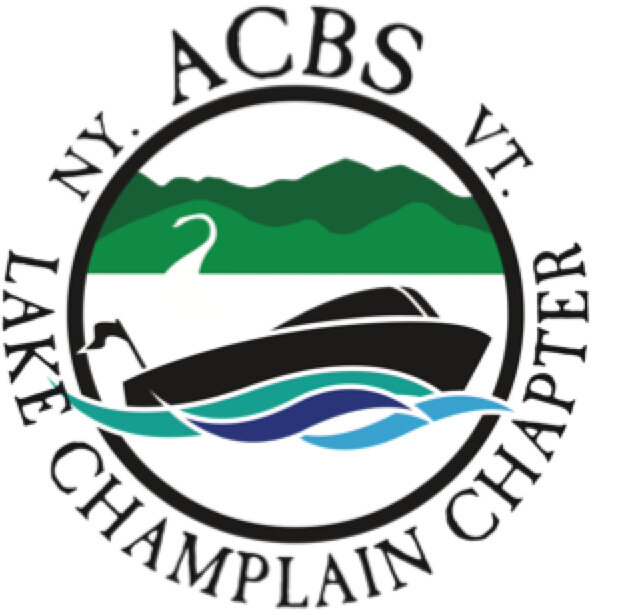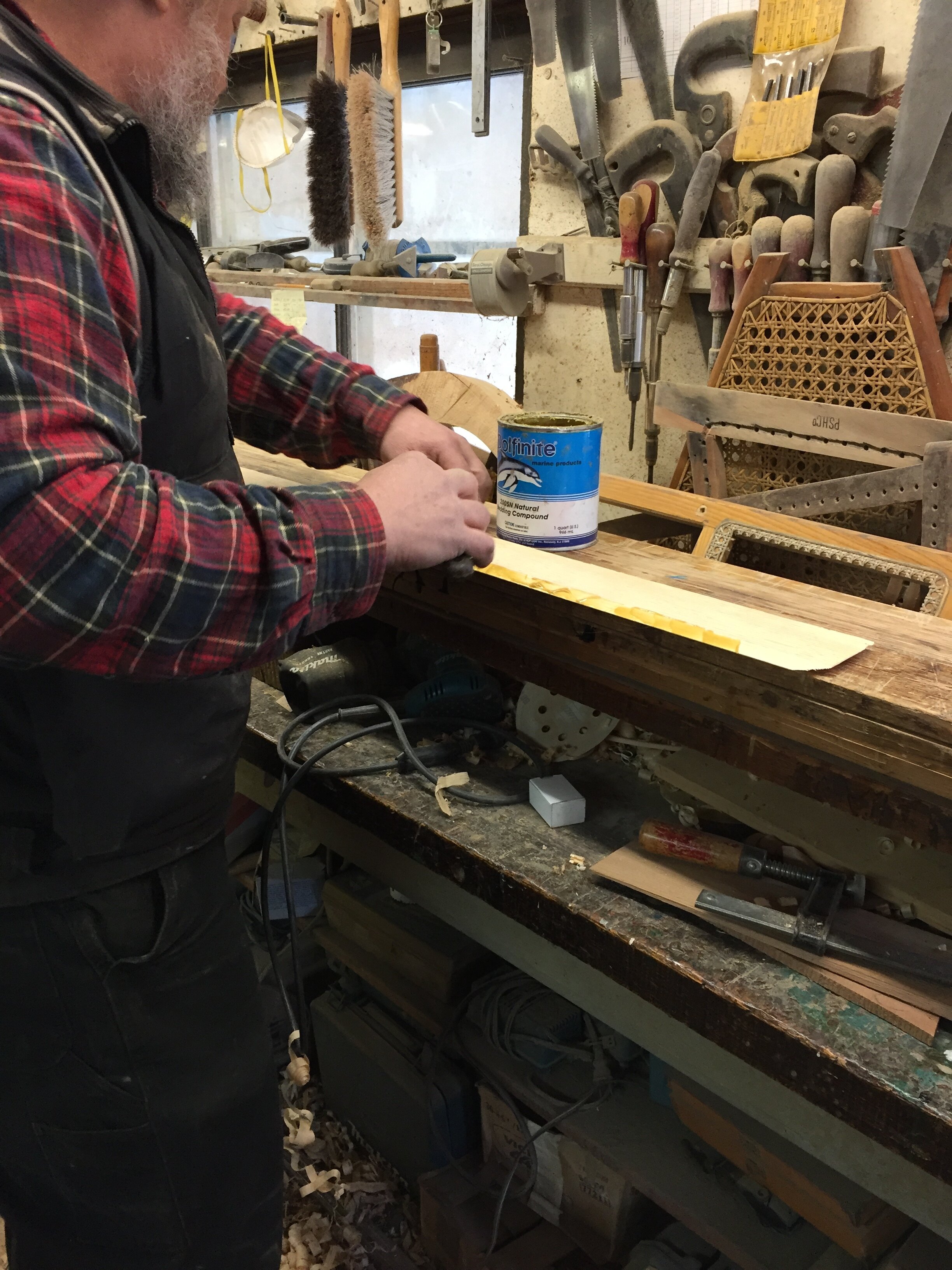This workshop allowed us to take a step back in time, for Chris Woodward’s shop has always been used for building Adirondack guideboats since 1930. A great many tools that Chris still uses date from the Adirondack guideboat builders that came before him in that same shop. The first owner, Willard J. Hanmer, had learned to build guideboats from working with his father Theodore J. Hanmer, and built and repaired Adirondack boats there for the next 30 years. The next shop owner was Carl Hathaway, a master guideboat builder who not only built Adirondack guideboats there but also, along with fellow guideboat master craftsman Ralph Morrow, taught students the craft of building guideboats using traditional methods, patterns, and materials. One of those students was Chris Woodward the current owner, who continues the tradition today out of this same shop, using a great many tools from the original operation that have been passed down with each successive business.
There were two boats in the shop, one, a smooth sided Adirondack guideboat built by a man named Charles E. Shaw as evidenced by a metal plate stamped with his name. To date no one knows who this man was, but the boat he built dates from around 1910. The materials he used were white pine planking, spruce ribs and stem, cherry gunwale, and the boat is 15’ 10” long. The other boat in the shop is a Lake Pleasant row boat, built by John Buyce in Speculator, NY and was built as a livery boat, or one used to rent to tourists, also dating to the same period but built out of western red cedar. Chris led us through the many different styles of these types of boats and the history of each, how they were built, the process of building them, and the process of repairing and restoring them as well.
Chris was in the process of replacing some of the damaged planks on the Shaw boat, and we watched as he demonstrated how he the tapered the planed pine plank, feathered the ends, coating the tapers with thinned down Dolphinite, and used brass screws to attach the plank to the ribs, then copper tacks clinched with an old and much used clinching iron on the horizontal seams.
One of our members, Steve Detwiler, brought a book with him from a local library that I had also seen in our earlier workshop at Tumblehome, “The Adirondack Guideboat” by the late Stephen B. Sulavik, with additions and revisions by Edward Comstock, Jr., and Christopher Woodward. Luckily for me, Chris had some extra copies of this recently published book, and he was kind enough to sign it for me.
Below are pictures that I took during the workshop. I came away from the experience with the echo of Chris’s desire to find an apprentice so that this knowledge can be passed down as it has been from generation to generation and that those tools so well used, will continue to make their mark on these unique and worthy boats.















